 |
Mountain Building |
 |

 |
Mountain Building |
 |

Fractures in the crust of the Earth are termed faults.
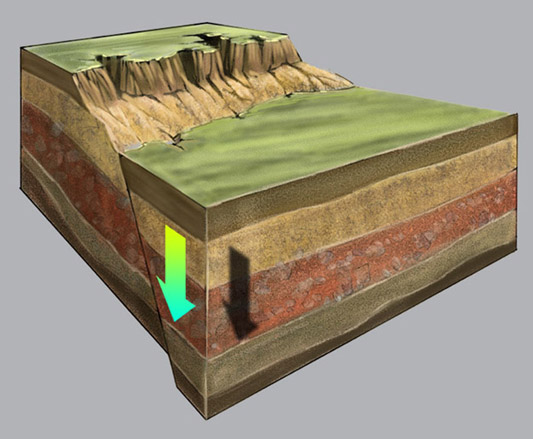
Diagram of a dip-slip fault.
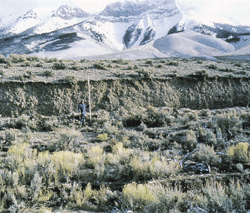
Fault Scarp.
Dip-slip faults occur when rock movement is roughly parallel to the inclination or dip of the fault surface. These displacements can produce long low cliffs called fault scarps. The hanging wall of a fault is the rock surface above the fault, while the rock surface below is the footwall. There are two types of dip-slip faults, normal faults and reverse faults.
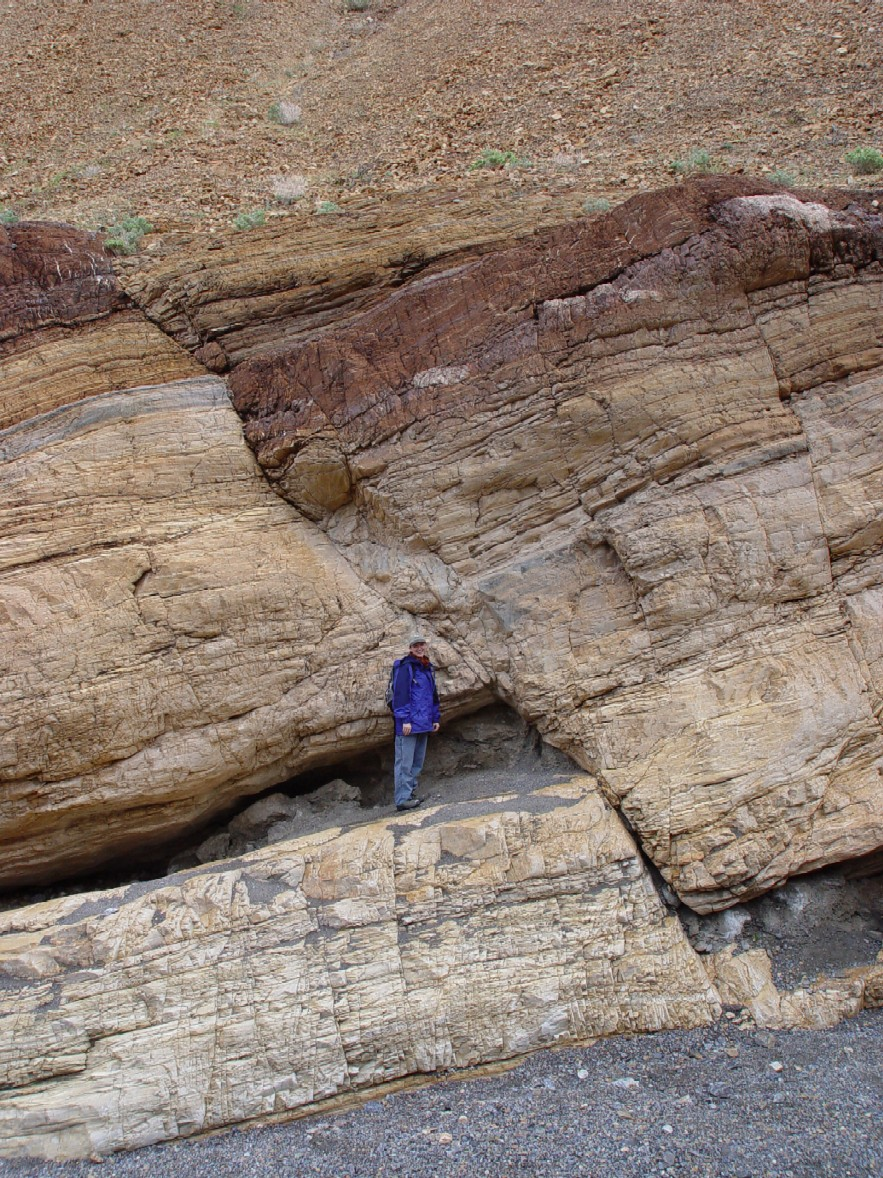
Picture of a normal fault: Eastern edge
of Teton Range in Wyoming (hint)
Normal faults are dip-slip faults where the hanging block moves down relative to the footwall block. These faults can be small, less than 1 meter or run form kilometers tracing the boundary of a mountain. These long faults are called fault-block mountains.
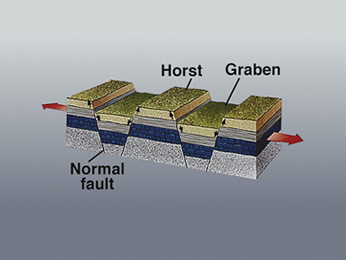
Picture of graben with horsts: Basin and Range Province
A graben forms when a central block at a divergence area is bound by normal faults. As the plates move apart, the central block drops and produces and elongated valley surrounded by horsts, uplifted structures.
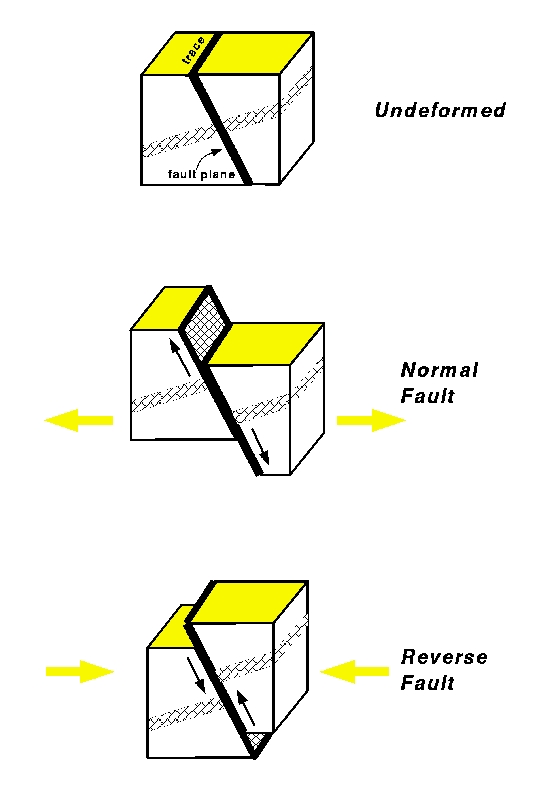
Diagram of a reverse fault.
Reverse faults are also dip-slip faults where the hanging wall block move upwards relative to the footwall block. If the fault dip is greater than 40 degrees, the fault is called a reverse fault. A fault with a fault dip less than 45 degrees is called a thrust fault.
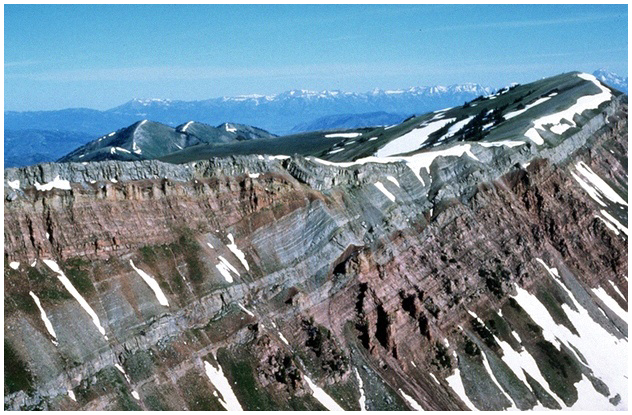
Picture of Thrust fault.
Thrust faults can be small or large in scale. Both thrust faults and reverse faults form from compressional forces resulting in large blocks of bedrock being pushed up and over the footwall block. Thrust faults are commonly seen in subduction zones and at convergent boundaries.
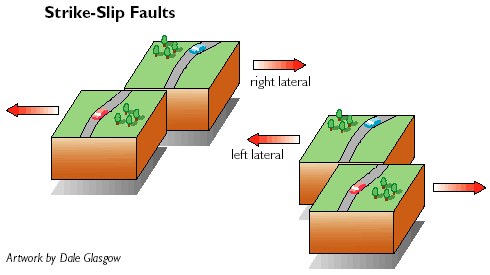
Diagram of strike slip fault.
Strike-slip faults occur when the displacement is horizontal and parallel to the trend or strike of the fault. This type of fault tends to be very large and linear consisting of several parallel fractures. Strike-slip faults that extend through the lithosphere and have motion between two plates are transform faults.
Back to Mountain Building Page 2 |
Mountain Building Page 4 |
Go To Mountain Building Assignments |